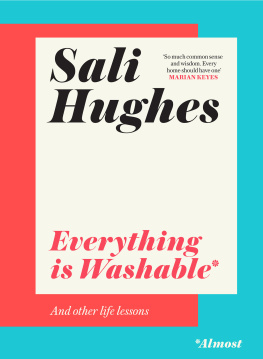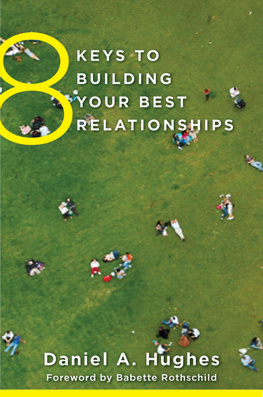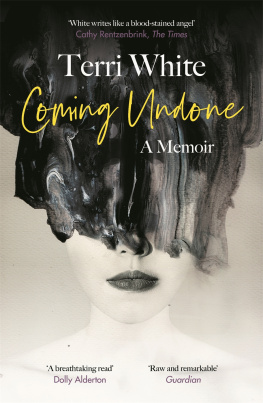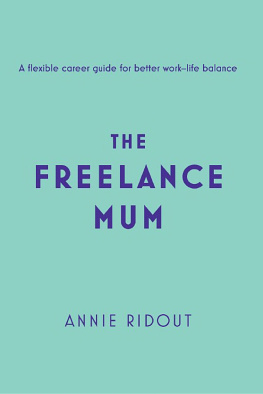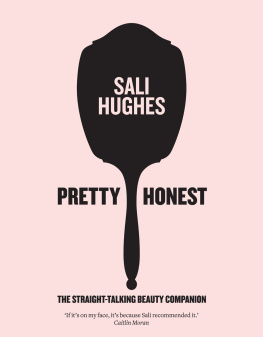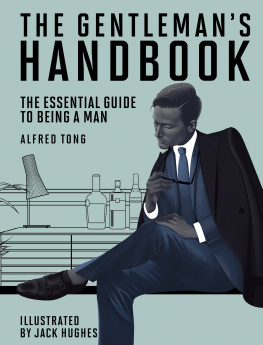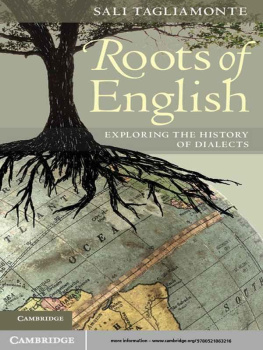Contents

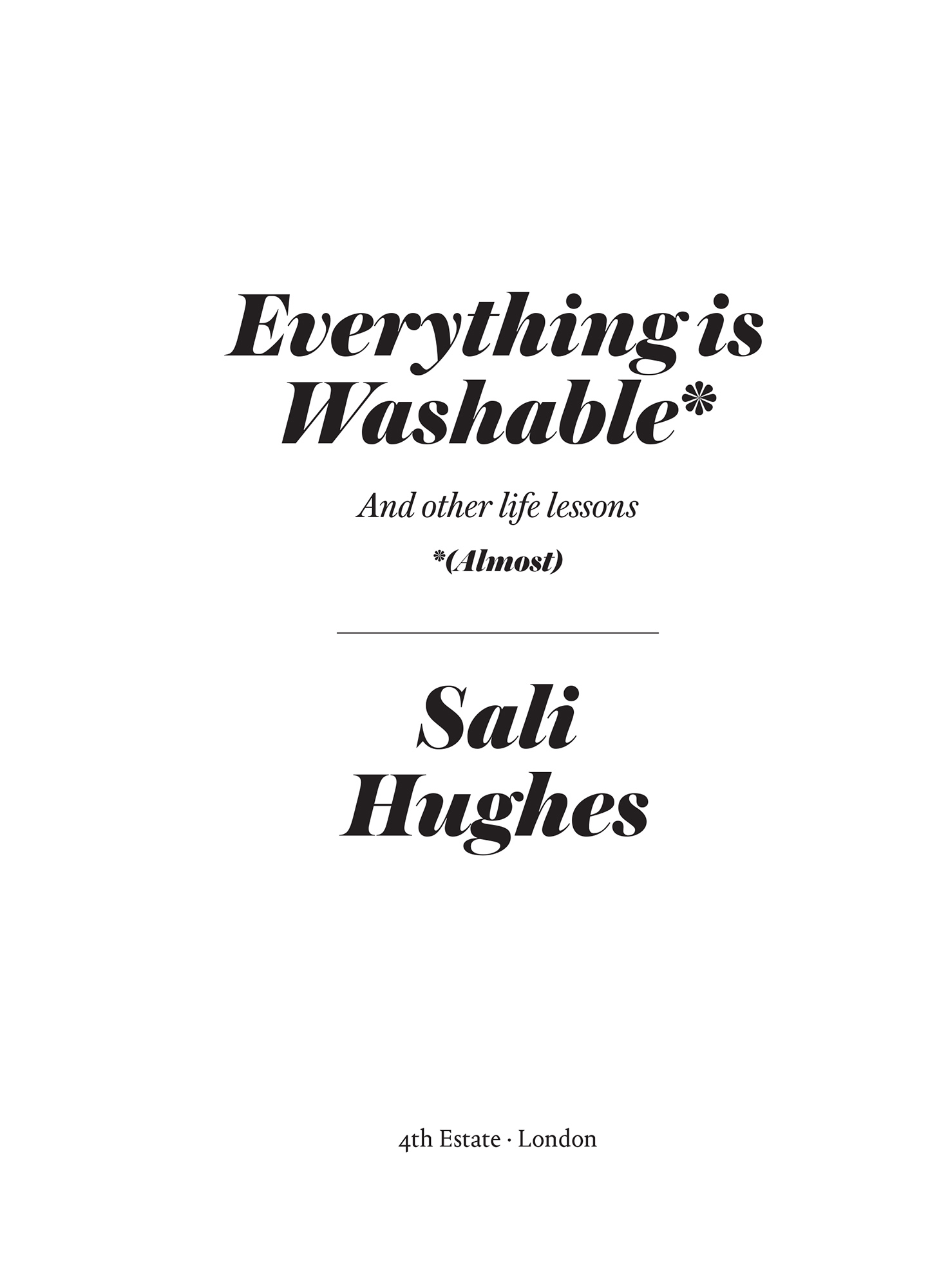
4th Estate
An imprint of HarperCollins Publishers
1 London Bridge Street
London SE1 9GF
www.4thEstate.co.uk
HarperCollins Publishers
1st Floor, Watermarque Building, Ringsend Road
Dublin 4, Ireland
This eBook first published in Great Britain by 4th Estate in 2022
Copyright Sali Hughes 2022
Pretty Honest Ltd
Cover design by Jack Smyth
This book has been written by Sali Hughes based on her own experiences and knowledge; the advice in it should be used to complement, and not as a substitute for, professional advice.
Always follow the manufacturers instructions when using kitchen appliances and other electrical tools and equipment.
Sali Hughes asserts the moral right to be identified as the author of this work
A catalogue record for this book is available from the British Library
Information on previously published material appears here.
All rights reserved under International and Pan-American Copyright Conventions. By payment of the required fees, you have been granted the non-exclusive, non-transferable right to access and read the text of this e-book on-screen. No part of this text may be reproduced, transmitted, down-loaded, decompiled, reverse engineered, or stored in or introduced into any information storage and retrieval system, in any form or by any means, whether electronic or mechanical, now known or hereinafter invented, without the express written permission of HarperCollins
Source ISBN: 9780008284176
Ebook Edition July 2022 ISBN: 9780008284183
Version: 2022-09-02
For Daniel Maier, with love
CONTENTS
The most beautiful homes are not made with money, they are made with love, and no amount of cash alone can disguise an unhappy one.
Several years ago, my boyfriend and I had to be at the Hay Literary Festival, and in an uncharacteristic fit of nostalgia, I suggested we drive to the village in which I grew up, some forty-five minutes away. We toured the landmarks my grandparents house, where I was born, the primary school Id attended, the comprehensive I barely went to, the library where I sometimes hid until school had finished and I could return home and, of course, my childhood homes, ending at where I had started: the small end-of-terrace I shared with my two big brothers and my father, following my mothers departure to a tiny flat a mile or so away. Dan and I had been stood outside for no more than a minute or two, peering as politely as we could at the house, when the door opened and a friendly older couple asked us if they could help. I told them Id grown up in their house and they immediately invited us inside for tea. I feel tearful whenever I think of them, not only because their home now bright, lovingly decorated and happy holds so many unusual memories for me, but also because the owners were so generous and warm that I somehow felt more at home than I did when I could rightfully call that house my own.
As they showed us around, sharing with us all the work theyd done over the past thirty-plus years, the conversation turned to how theyd come to buy the place. They told us that some time after my family must have moved on, a man had moved in an older Englishman whose wife had left him. Hed apparently become so depressed that hed developed a drink problem and become what wed now call a hoarder. There had been vermin, they told me. Litter throughout the house. Damp, mould. Every room was full of junk old newspapers, broken furniture, filthy carpets and bags and bags of rubbish. The overgrown garden concealed broken glass, scrap and yet more rubbish bags. They were glad, they told me, that Id never had to see my former home the house we all loved in such squalor. It had been a very sorry state of affairs. I nodded and smiled because I had too much pride, and felt too much shame, to tell them and my new boyfriend that the Englishman was my father and the house sounded much the same as when wed left it.
I tell this story because, as sad as it made me in some ways, that day also showed me how a houses entire soul can be transplanted with proper cleaning, some organisational care and a few cherished, meaningful possessions. The most beautiful homes are not made with money, they are made with love, and no amount of cash alone can disguise an unhappy one. Because of the circumstances in which I grew up, and the unpredictable and precarious nature of my housing once I left home at nearly fifteen and came to London, I am undeniably obsessed with my home, which is the most important thing in my life after the people I love. I confess, I fetishise domesticity. Not in a frantic cushion-plumping, door-knocker-polishing, doorstep-scrubbing kind of way (though I am full of admiration and envy for the diligently house-proud), but insofar as there is nowhere in the world Id rather be than on my own sofa or bed. I simply cant believe my good fortune in having a home that I love and I would do pretty much anything legal to hold on to it. Its where I feel safest, comfiest, happiest and most like myself.
You may be the same. Our homes give us so much, so I feel taking care of them is the least we can try to do in return. For me, that means keeping mine clean, of course. But more personally, it means owning things I truly treasure and not allowing the things I dont to obscure and overshadow them. It means keeping everything in good repair and proper working order, using the skills I learned from my maternal grandparents and great-godmother, who taught the very little me how to light a fire, sew on a button and operate a twin tub. It also means designing rooms, choosing colours, arranging photographs and decorations in a way that allows me to have the affectionate and intimate relationship with my home that, for a variety of reasons, my father was sadly unable to form. Heres how Ive done it.
Old is usually better
I will not shop for a single item of furniture until I have first explored the second-hand options available. I estimate that at least half of my furniture is pre-owned and, in all honesty, Id like that share to be higher. Vintage furniture is, in my unshakable view, unfailingly of a much higher quality than its modern-day equivalent, and often very much more beautiful, too.
Please dont feel Im talking about precious antiques here I own very few expensive pieces and even those were fairly cheap when I bought them. Im mostly talking about the sort of stuff your parents or grandparents might have bought. Old, mass-produced, high-street furniture is at least as sturdy as luxury brands are now. My 1970s tan leather Chesterfield sofa (probably made by someone like MFI) cost 136 on eBay in 2003. It has been the birthplace of two babies, the climbing frame of two children, the bed of two dogs and the overcrowded host to countless party guests. It has seen two smart, new, infinitely more expensive sofas come and go, and I suspect itll outlive the third. Its nearest neighbour, my 1960s G Plan cabinet, has also been in the family longer than my children and cost me less than a Deliveroo for four. My original Art Deco towel rail was a mere fiver and yet somehow elevates the look of the whole bathroom. My beautiful Edwardian dressing table and matching three-way mirror (no doubt unexceptional in the 1930s) was destined for the skip and cost me 45 for a delivery company to fetch it from London. I could go on and on, room to room, but suffice to say that every single one of these items is more solid, more soulful, attractive and meaningful than the albeit lovely new items Ive bought to live alongside them. Vintage furniture gives me great joy and zero guilt over money and waste. Just one well-chosen piece will, in my view, make your room look and feel so much better.

